Attractive pots are great for gardens – but need a little extra attention
Container gardening is, obviously, just the thing for folk with patios, balconies, wee plots or those who simply can’t resist those glazed pots in garden centres.
I caught myself just the other day admiring some handsome terra-cotta pots in a garden store. Just the thing to bring a bit of colour right up to the back door. I even fell into conversation with one of the staff.
From her I learned that, as well as pots, a top selling line was cast concrete animals, like hedgehogs, rabbits and that kind of thing.
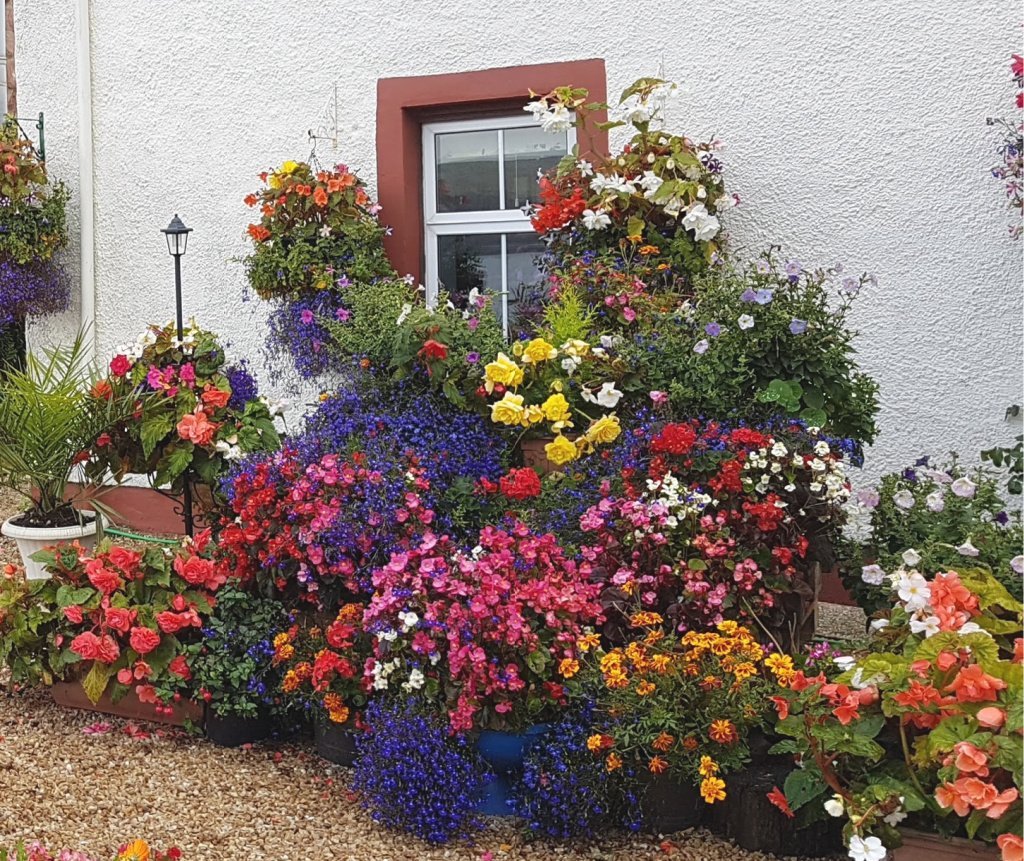
Concrete rabbit, anyone?
She kept shrugging his shoulders and saying: ‘Who am I to decide what the public want to buy?‘ We decided that a concrete bunny had much the same appeal as a garden gnome. You either find it attractive or you don’t.
Well, a resin or concrete animal is just that – and there isn’t a lot you can do with it, except admire it (or squash the pang of regret).
But a muckle great glazed pot? That’s a blank canvas. A big range of earthenware comes in from China and the Far East, in plain terracotta as well as glazed and patterned.
Outside pots – A cracking show if there’s frost
Beware, though: don’t stand a glazed pot outside in the winter as frost can crack it badly. Best to check the label or quiz your supplier if his goods are frost proof.
Wooden half-barrels are another quite popular option. You can line them with black plastic or bubble-wrap to stop the wood rotting. There also seem to be a lot of concrete repro containers around, cast to look like ancient stone urns.
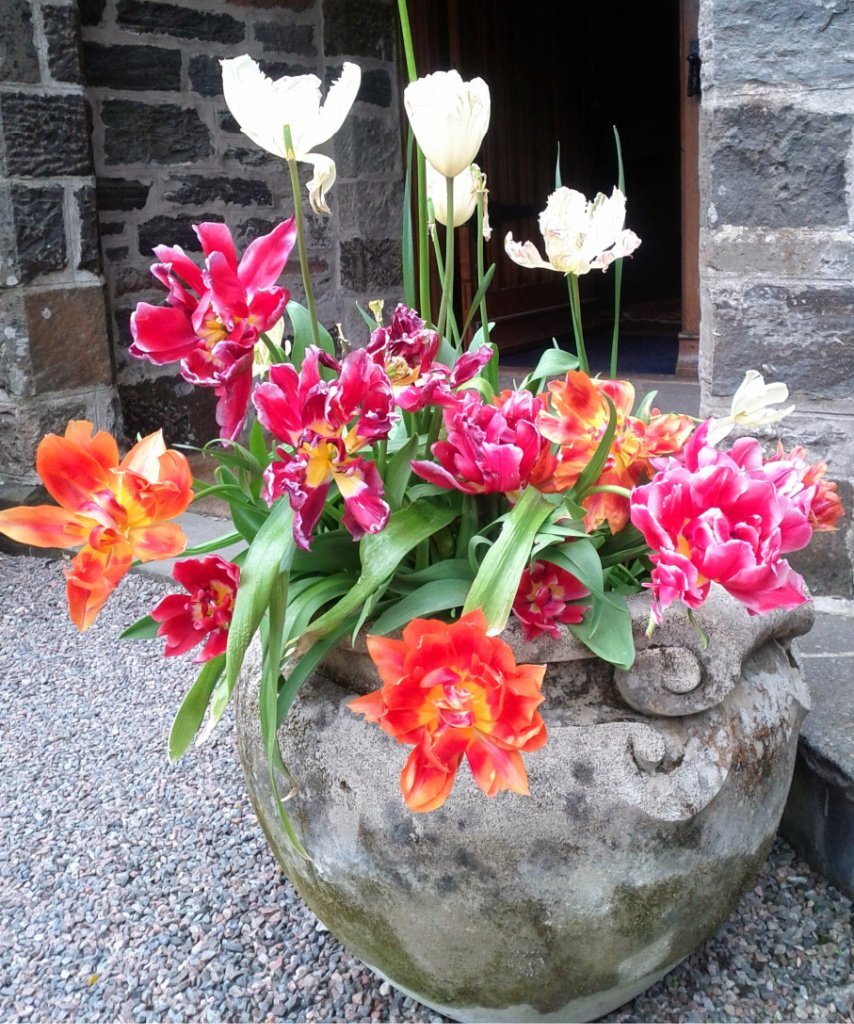
(Above) Tulips make a great spring display but like all spring bulbs can look a bit dispirited after flowering. A container is a feature and needs that little bit extra attention. What is going in for the summer here, for example?
You can sometimes buy them ready weathered, though they don’t come cheap. Yet another option is to pay a lot for an antique urn in stone, cast iron or lead, from an architectural salvage yard. That’s upmarket container gardening.
At the other end of the scale, obviously, there are also plastic containers of all kinds on offer, many simulating the heavier materials.
However, out of doors, I’ve found plastic pots tend to overheat in sunlight – especially black plastic. In fact, I reckon you can’t beat terracotta for keeping the all-important roots at just the right temperature and free from water-logging.
Containers are heavy!
But whatever container you choose, there are other points to note if planning to fill your patio or any paved area with colour. For a start, a cubic metre of compost weighs close to a metric tonne.
These clever circular trolleys with wheels might be the answer. Wait, they are really called plant caddies, I think, and are just the job if you think you’ll have to move your huge, heavy container from place to place on the patio perhaps.
Otherwise you should get the grand pot or tub into its final position before you start filling it. Obviously, really. This is also a thought if you intend to put a tub out on a balcony or anywhere else that might have floor weight restrictions.
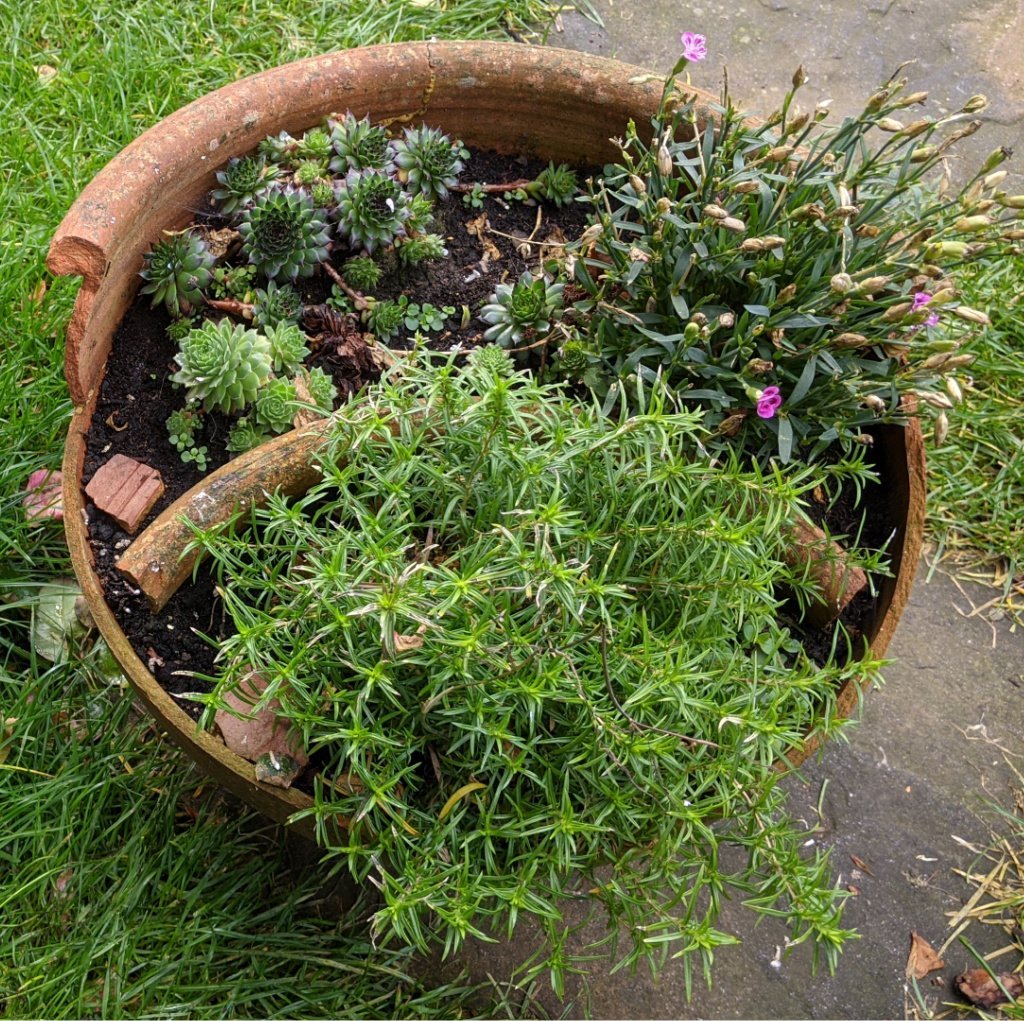
What lies beneath…
With very large containers, you can save on expensive potting compost by using upturned turves (or is it turfs?), garden soil, or home-made compost on the bottom to help with drainage, then top up with the proprietary compost.
Yes, I know this sounds a bit mean but we do like to cut corners here. It’s not as if the garden police are going to bust you. No-one will ever know.
To be honest, I’ve sometimes put a good layer of gravel or stones (helps with drainage) or even old compost from last year – just to make the fresh compost on top go further!
Try to avoid using any container less than about eight inches (20cm) across, otherwise, in summer, you’ll be out there constantly watering the poor wee thing. With container gardening, big is definitely beautiful.
However, remember that if you put a wee plant in too big a pot, it will make root growth at the expense of leaves and flowers.
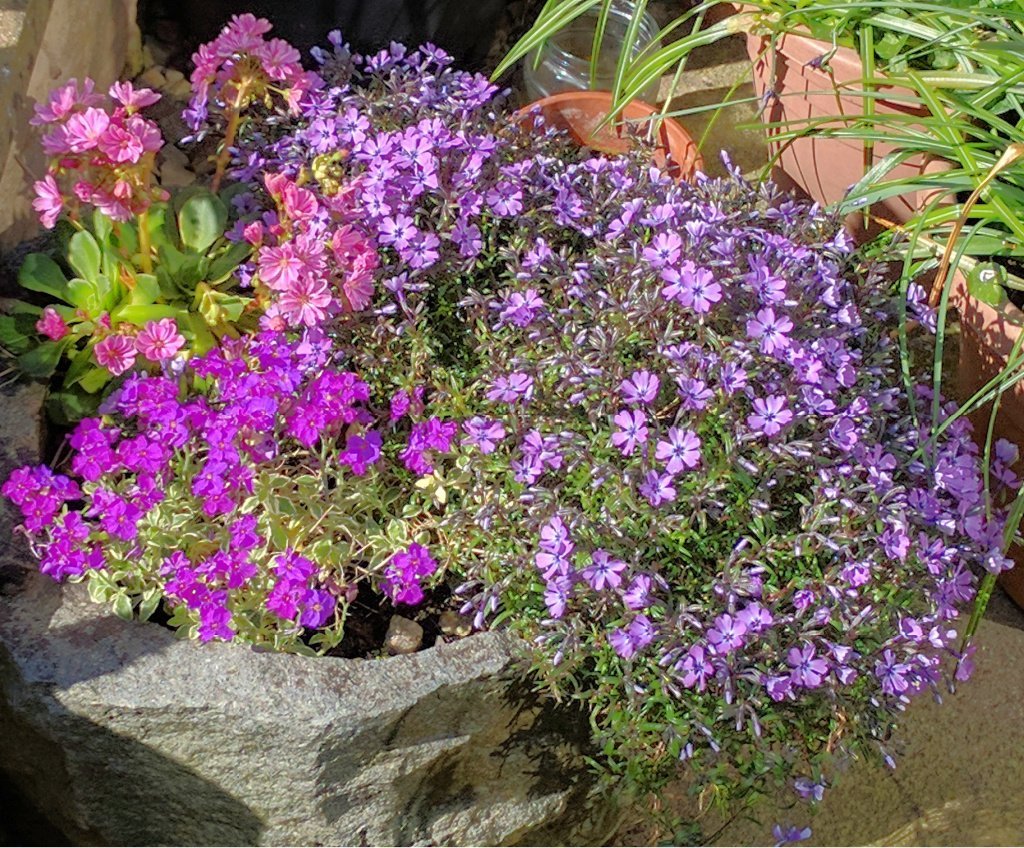
(Above) Solid stone, circular with the interior smoothly bored out – never quite seen a container like it. Planted three attractive alpines in it a year or so back. The vigorous alpine phlox (on right) soon smothered the other two…that’s another thing to remember about container gardening. Choose plants of equal growth rates if possible.
Container gardening – a commitment
Know what? I reckon there is more to this container gardening malarkey than you might think.
Whatever you plant, as well as the watering, it’s always a good idea to rake over the surface crust that always seems to develop on pots to allow air and water to penetrate evenly.
The most important thing, I reckon, is that the all-important roots are above ground, prone to temperature fluctuations, as well as the vagaries oh whether or not you remember to water.
It’s a commitment on your part and it’s very easy to stress even tough plants, in times of weather extremes. Sorry to be a bit gloomy here.
You’ve planted the lettuces in what?
Right, that’s the official line on containers for gardening. But there is another aspect of the topic. You can shove your plants into anything you like! No, really.
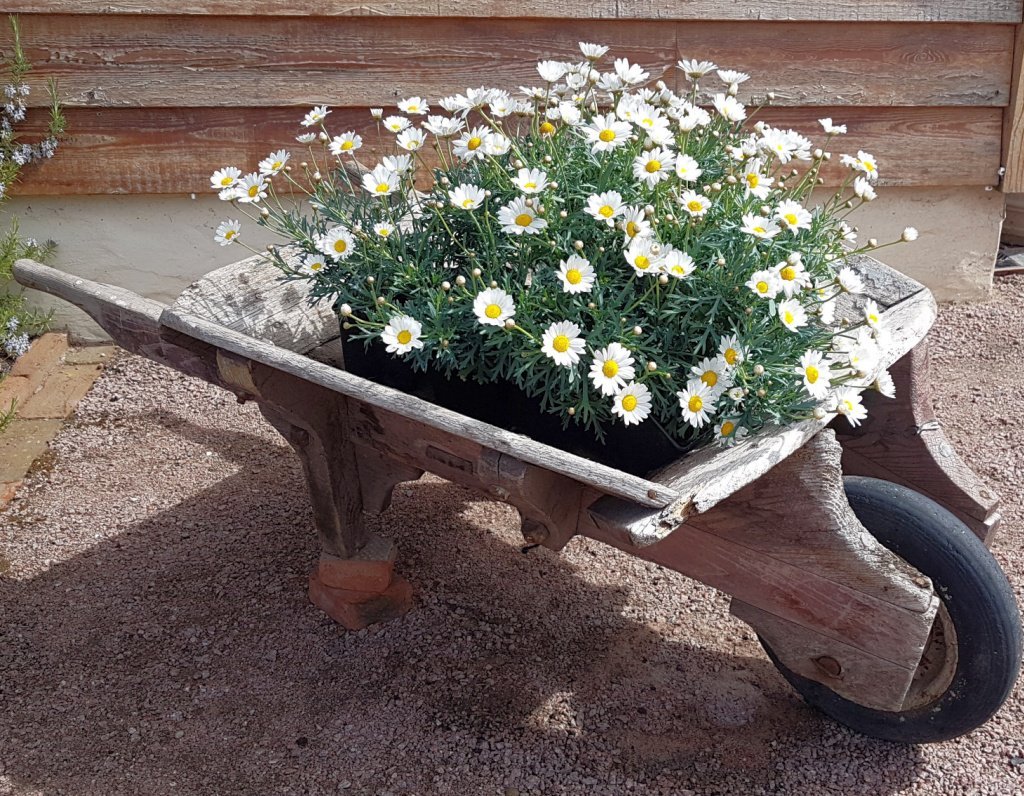
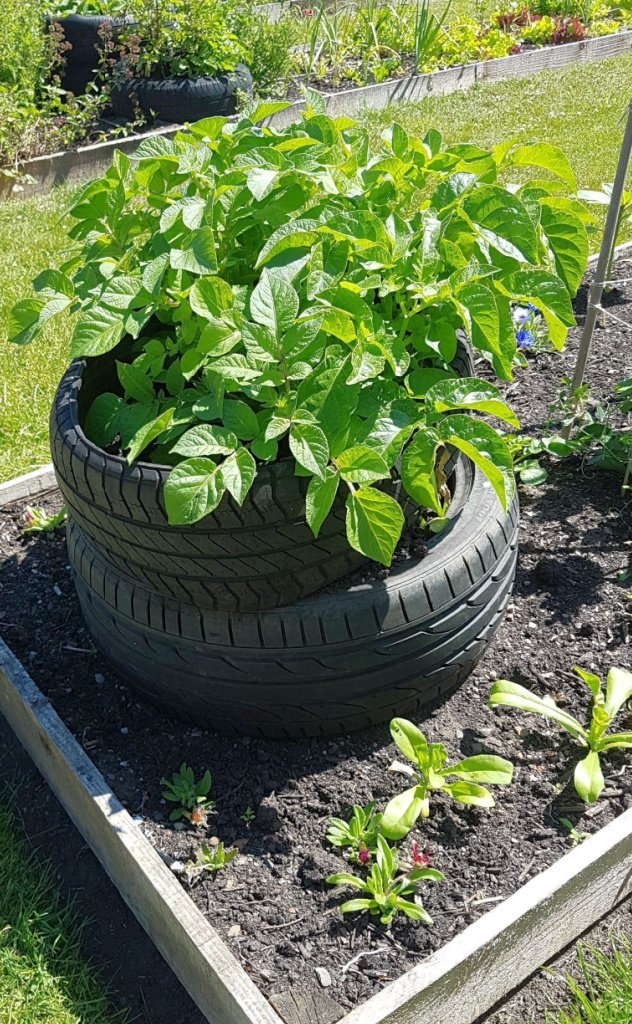
I’m not saying in which little town but I used to regularly walk past a house whose front garden feature was – wait for it – a row of toilet bowls, each sprouting an array of greenery and colour.
It looked ghastly, but, hey, the owner of the house obviously was happy. The fact that it was in the middle of a terrace made the effect even more, uhmm, striking.
And then we have the novelty arrangements, beloved of some folk. I’m thinking here of, say, old wellie boots, decrepit wheelbarrows, decaying rowing boats (a real community statement that one) and, my especial favourite (not), rubber tyres.
This particular container, no matter how nice the plants are, suffers from the fact that it always looks like an old rubber tyre.
The only thing that’s worse than an old tyre is a tyre that is still attached to the wheel-hub, with the tyre cut round and unfolded so that the metal hub becomes the base.
This makes the arrangement look like a wheel-hub with an outsides-in tyre on top. (I hope it’s not just me…)
Do old sinks make good plant troughs?
I think the jury is out when it comes to old sinks. All right, I have cast envious glances at old brown earthenware sinks that live out in the fields and (formerly?) functioned as drinking vessels for coos or whatever. More than once, in passing I have thought they’d look OK with alpines.
And then I thought, hang on, that would be theft…talking of which, fish boxes are mentioned below.
Then there was the once-nearly-fashionable practice of taking any old white porcelain sink, and slathering it with cement to make an alpine trough. But you couldn’t stop there, oh no: the manuals then said you had to paint on yoghurt in order to attract moss to make it look weathered. What? Did anyone actually ever do that? And it had to plain yoghurt.
By the way, I am talking here about sinks that had been replaced and hence removed from the bathroom. You knew that, didn’t you? I confess I once once got as far as trying to cover a white sink in cement. That was difficult enough on the vertical surfaces but the first frost cracked off the lot. Ghastly.
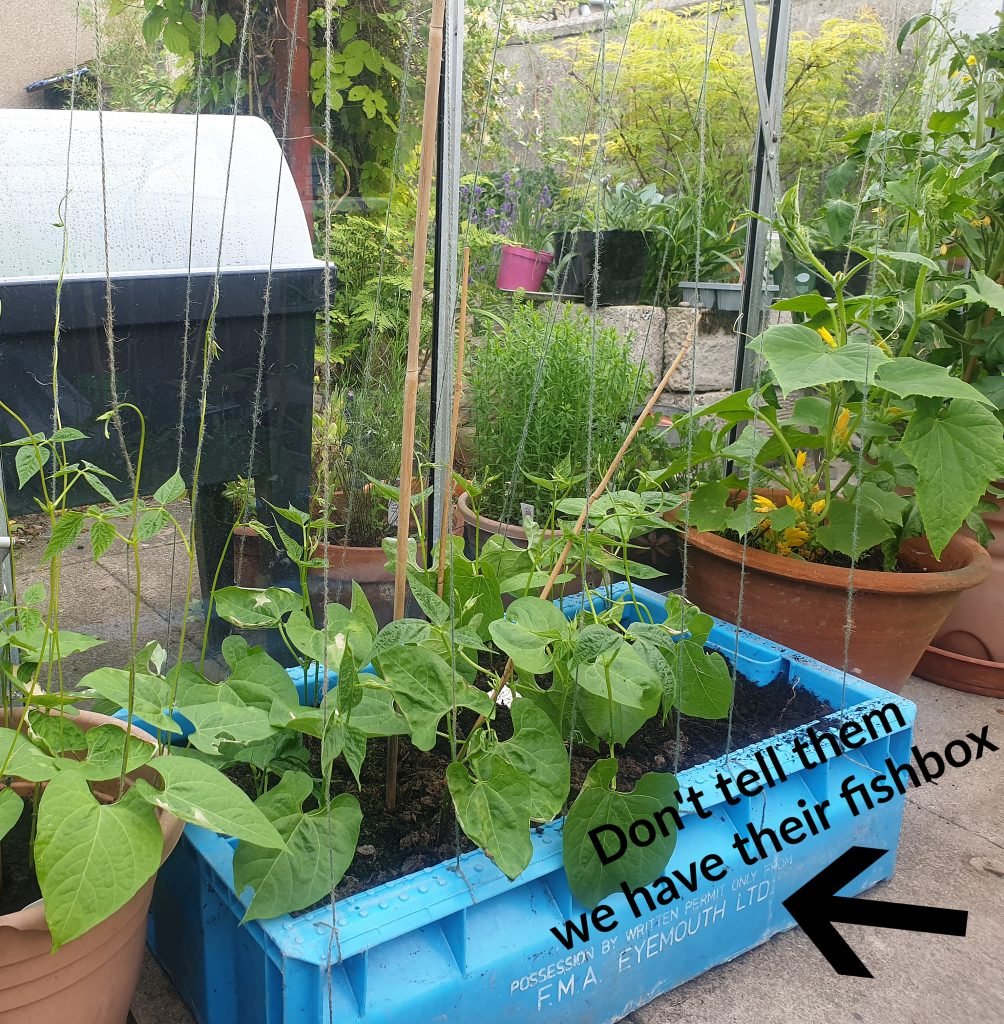
Plant in anything you have at hand
Right-oh, final confession. Right now, in the greenhouse, I have an old plastic washing-up bowl that has been great for French parsley. Outside, there’s an old metal sink a neighbour was throwing out. It’s got tarragon and chives.
I’ve just drilled holes in the base of a plastic container that started life as a freezer-drawer. That’s for winter lettuces.
And you should see the crop of tatties I got in the fish-boxes this year. Admittedly, fish-boxes not so easy to come by if you live inland. It’s the tides, you see. And you have to ignore the stern warnings printed on the side that says you have to return ‘em to the ‘box pool’, possibly half an ocean away.
There’s world of a difference between practical containers for food, in out of the way corners, and beautiful containers for attractive plants on display – especially alpines.
And I definitely draw the line at toilet bowls in all cases.
